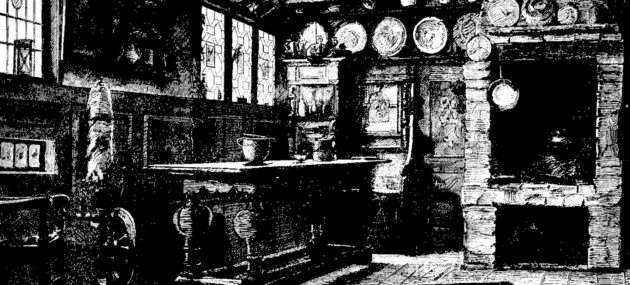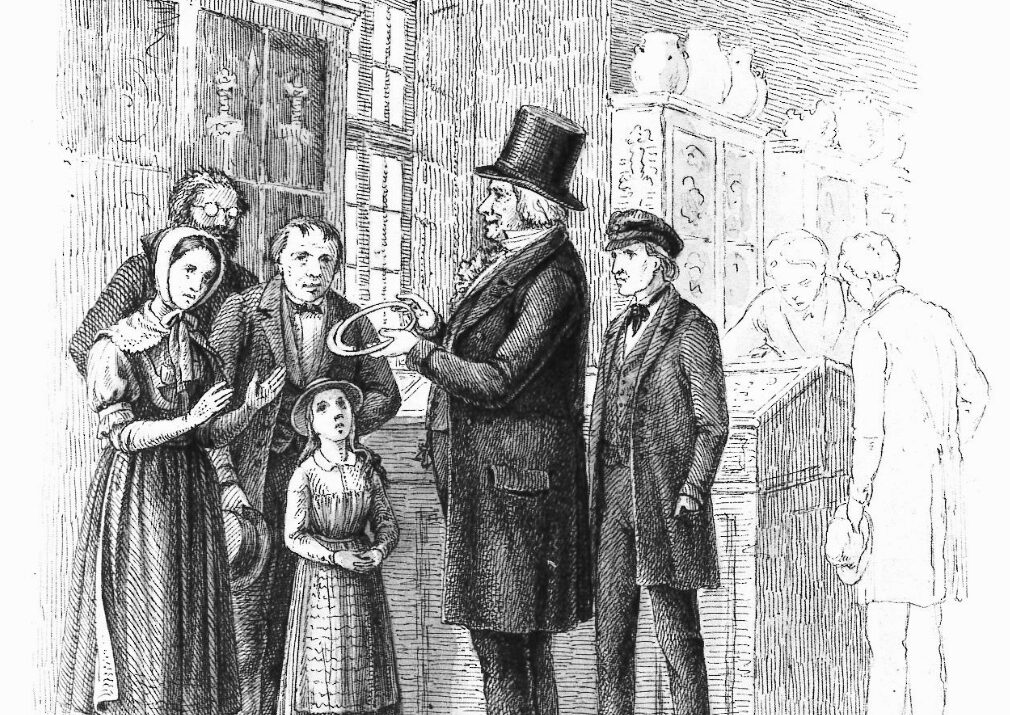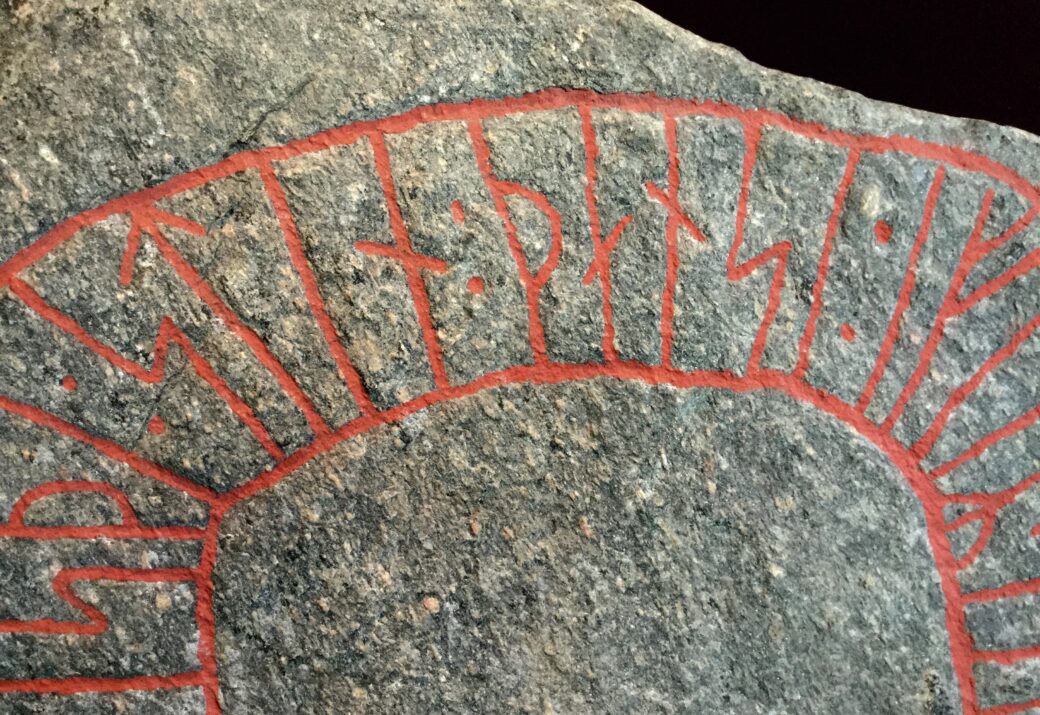This website uses cookies so that we can provide you with the best user experience possible. Cookie information is stored in your browser and performs functions such as recognising you when you return to our website and helping our team to understand which sections of the website you find most interesting and useful.

Peasant Rooms at the Bell Loft
It cost 50 øre to enter, 5 øre to put one’s stick in the wardrobe, and if one still had some money left at the new Danish Folk Museum, which opened in the Panopticon Building on the street Vesterbrogade in Copenhagen in August 1885, it was possible to get hold of a catalogue with a detailed description of the museum’s rooms in exchange of 30 øre more. The rooms contained furniture and items from various civic and peasant homes in past and present Denmark.
“True, it was kind of an emergency solution that it took place in that exact place”
A couple of years after the inauguration, the price of the catalogue was raised to 35 øre and in return it was now possible to read in the catalogue that “The Danish Folk Museum was founded in the summer of 1879 at the Agricultural Department in the Art and Industry Exhibition in Copenhagen”, and that “it was arranged and organised by director Bernhard Olsen in the years 1879-1885”. What the catalogue did not say, however, was that Bernhard Olsen (1836-1922) collected many of the items for the museum and made the arrangement of them in the Trinity Church’s Bell Loft, which is accessible from the Round Tower.
True, it was kind of an emergency solution that it took place in that exact place. In fact, Olsen wanted to use the floor below, where the National Museum of Denmark, which was still called the Museum of Northern Antiquities at that time, was founded at the beginning of the century. However, he was not able to make it happen there because the floor was rented out to a bookseller who used it for storage.
The National Character
The Danish Folk Museum was established after Bernhard Olsen, who had previously had a versatile career in the entertainment industry, newspaper industry and the military, had visited the Paris World’s Fair in 1878. The world’s fairs had been organised regularly since the middle of the century as ”ein friedlicher Wettstreit zwischen alle zivilisierte Nationen der Welt” (“a peaceful competition between all the civilised nations of the world”), as the Austro-Hungarian Emperor Franz Joseph (1830-1916) once put it.

It was very much the emphasis on the nations that was important, since the fairs gradually helped develop a language or “a common visual code with which each nation’s cultural characteristics, national style and historical roots could be expressed in a comparable way”, as the ethnologist Bjerne Stoklund (1928-2013) has phrased it.
At the world’s fair in Paris, Bernhard Olsen was particularly fascinated by the way Sweden and the Netherlands had arranged their display. Thus when an Art and Industry Exhibition was organised in Copenhagen the following year, he got permission to exhibit “four complete rooms, fully equipped with furniture, plenty of household effects, carts and a rich collection of woven and handsewn items”, as he wrote.
A Motley Lumber Room
The items belonged to a period and, especially, a class of society, which was not otherwise displayed in museums at that time. Olsen wanted to rectify that absence of representation by creating a permanent “Peasant Museum”. That way, he was also able to avoid having scattered to the four winds the items he had collected once the Art and Industry Exhibition was over.
When something enters a museum it can be an indication that it is about to disappear from daily life. This was exactly what was happening to the peasant culture that Bernhard Olsen wanted to show the public and that contemporary artists also tried to hold on to in the national genre painting.
The Museum of National History at Frederiksborg Castle, whose establishment brewer J. C. Jacobsen (1811-87) had just offered to finance, was also a token of the national movement of the time. Therefore, there was a certain logic in a proposal that made room for Olsen’s peasant rooms at the castle. The brewer himself was very sympathetic to the idea but the proposal was rejected by the archaeologist J. J. A. Worsaae (1821-85). He had originally supported Olsen in his creation of the peasant rooms but now he said no, stating that, “For God’s sake, let us not turn Frederiksborg Castle into a motley lumber room”.
Early Museum Interest
Instead, Bernhard Olsen had to make do with the Bell Loft at the Round Tower and even, for the first period of time, only with half of it. He had had a view of the Round Tower from his earliest childhood, born as he was in the porter’s lodge at the dormitory Borchs Kollegium in the street St. Kannikestræde. This was only a stone’s throw from the tower, which he described in a memory sketch from the year when the debate about the possibility of moving the tower because of the increased traffic on the street of Købmagergade was beginning to run high.
“As a kid, he was a regular part of the swarm of boys that the antiquarian Christian Jürgensen Thomsen had around him when he did his famous public tours of the collection”
“In everyday life, the neighbourhood was just as peaceful as the house,” Olsen wrote. “Our city’s Latin quartier with the Bishop’s House, the University, the Technical University, three dormitories, the Latin School, two churches, dean and pastor residences, and the illustrious Observatory at the Round Tower with the rune stones in its spiral and its reputation for stability, which has now become somewhat doubtful.”
Olsen knew very well that the University Library on the floor above the Trinity Church had been the hotbed of the Museum of Northern Antiquities. The museum had moved to Christiansborg Palace four years prior to the birth of little Bernhard but as a kid, he was a regular part of the swarm of boys that the antiquarian Christian Jürgensen Thomsen (1788-1865) had around him when he did his famous public tours of the collection, and Thomsen had been one of the leading forces behind the museum when it was situated in the Library Hall.
Problems in the Church Loft
Perhaps it was in the hope that some of the success of the Museum of Northern Antiquities would rub off on his own project that Bernhard Olsen did not linger over the exactness of the location, when he wrote to a Swedish colleague in 1880 about the new setting of the peasant rooms after the Art and Industry Exhibition. “The loft above the Trinity Church has now been handed over to me on very cheap conditions”, he reports and adds, “It is not a particularly good place but the ascent (the Round Tower) is very popular and it was here that a Museum of Northern Antiquities emanated from, so that can be looked upon as a good omen”.
Other voices were more distinct as to the exact location. Over the years it became increasingly clear that it was neither good for the museum objects nor the Bell Loft to have them stored there. The executive committee of the not yet opened museum complains about the loft being “far from suitable and the items very exposed to temperature changes under the leaky church roof”, whereas the church authority is concerned about the heavy items that are placed on the floor, “as the roof construction has already suffered under a heavy pressure for a long time”.
Further Development
With regard to the wish of having the museum’s doors open to the public, which, apparently, was the original plan with the Bell Loft, it also looks bleak. The building commission of the church is thus concerned about the “opening of a museum in this room, which is only accessible through a small narrow door, and which in the same commission’s opinion poses a danger of conflagration in many respects”, as it states. According to Bernhard Olsen the commission is not only concerned but actually forbids the museum “to be placed in its old storage room in the loft of the Trinity Church”, as he writes.
The Danish Folk Museum thus moves on to another locality and, with time, undergoes tremendous development. In the years around the turn of the century, Olsen took his exhibition principles to their logical conclusion and, at first, moved a couple of old buildings to the Rosenborg Castle Gardens and then, in 1901, to Lyngby where the Open Air Museum is still located today. Later on, the Open Air Museum and the collection in the Panopticon Building both became part of the National Museum of Denmark. No wonder, perhaps, since they had all had their infancy in almost the same place.


